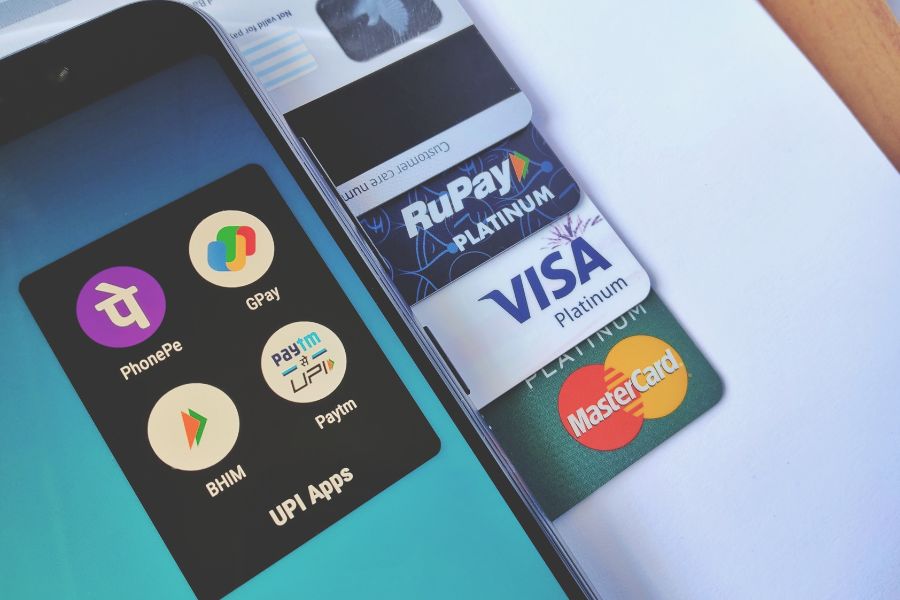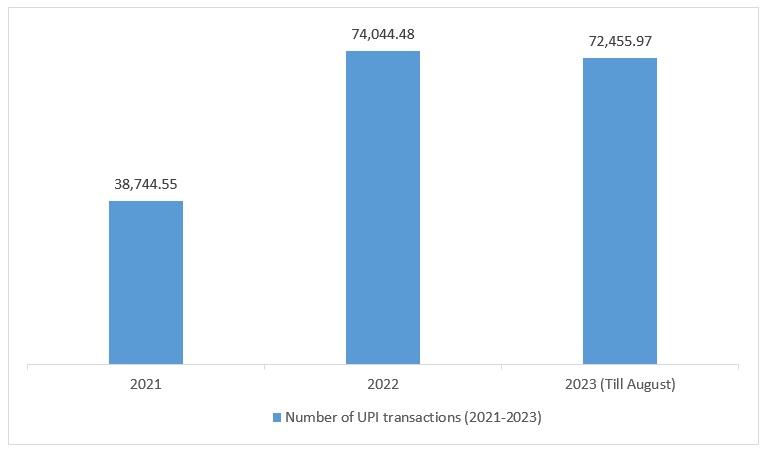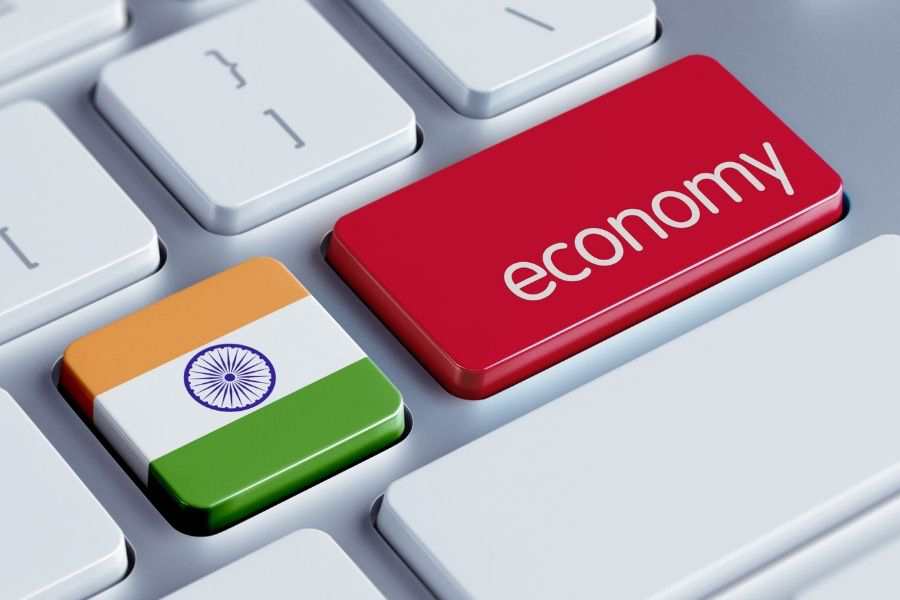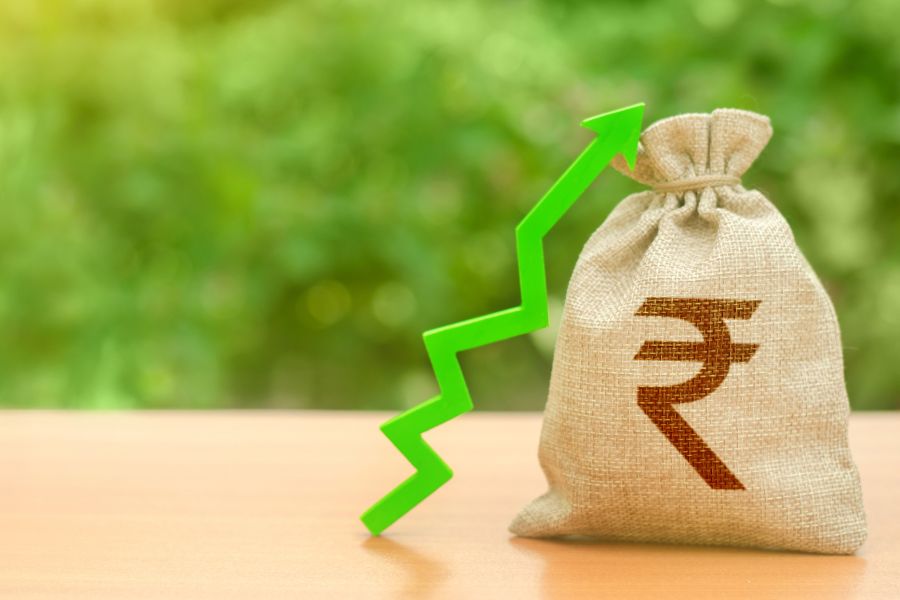Digital Payment Infrastructure: India’s emerging soft power
India has emerged as a global pioneer in the world of digital payments infrastructure. This remarkable transformation, driven by technological innovation and visionary policy initiatives, has not only revolutionized the way financial transactions are conducted but has also empowered millions of individuals and businesses with unprecedented access to financial services.
While India has already established itself as a global benchmark for Digital Payment Infrastructure, the nation continues to diligently improve its digital infrastructure. Leveraging cutting-edge technologies, India’s burgeoning startups have a substantial journey ahead as they strive to attract new customers and provide innovative services.

Image Credit: Shutterstock
The G20 Leaders’ New Delhi Declaration officially adopted on 9th September 2023, has boosted India’s measures to push the global adoption of digital public infrastructure. The three key outcomes of the declaration included the recognition of a global framework, the formation of a global alliance to support financing to boost adoption and putting India in focus as a leader in implementing digital public infrastructure.
The Digital Payment Infrastructure (DPI) such as Jan Dhan Bank accounts, Aadhar and Mobile phones (the JAM trinity) has played a significant role in India’s financial inclusion rate of 80% that has been achieved in just six years, which otherwise would have taken whopping 47 years as per G20 policy document prepared by the World Bank.
India Stack is the most popular addition to India’s Digital Payment Infrastructure as the UPI QR has emerged as the most popular payment option. Whether transacting at a ticket counter or purchasing small items from a grocery shop or street vendors, the UPI QR code is available even with the micro vendors.
The World Bank document has recorded that the total value of UPI transactions last financial year was around 50% of India’s nominal GDP. With the use of DPI, “Banks” costs of onboarding customers in India decreased from US$23 to US$0.1. As per the March 2022 data, India made total savings of US$33 billion, which is equivalent to nearly 1.14% of GDP owing to Direct Benefit Transfer (DBT).
What is digital public infrastructure (DPI)?
Digital public infrastructure or DPI is a digital network that enables nations to efficiently deliver economic opportunities and social services to all residents. It enables people to open bank accounts and receive wages faster and more easily. It allows governments to support citizens more quickly and efficiently, especially during emergencies.
A strong DPI has three foundational systems that enable a government to directly connect with the public, it includes:
- Identity: In a vast country like India, being able to prove your identity enables a person to fully participate in society and the economy. A digital identity supported by DPI, allows people to access a wide range of goods and services, including bank accounts, supplies and markets for their businesses along with government benefits.
- Payments: Introduction to new digital payment platforms allows millions of people, especially women to conduct secure financial transactions without cash. With digital payments, people, businesses and governments can instantly send and receive money even while using different banks and mobile service providers.
- Data exchange: A data exchange system enables sharing of data even in unconnected institutions which benefits people while offering more control over their data.
A Digital Payment Infrastructure is particularly beneficial during times of emergency such as the outbreak of the COVID-19 pandemic, as countries with efficient DPIs can instantly and securely help their citizens by delivering emergency payments. For instance, in India, emergency payments were made to around 300 million people, including 200 million low-income women within weeks of the initial pandemic lockdown.
Commenting on government’s consistent endeavors to boost Digital Public Infrastructure and to support emerging startups, Hrushikesh Mehta, Senior Vice President – Financial Services at Open Network For Digital Commerce (ONDC) spoke exclusively to IBT stating –
The G20’s renewed commitment to Digital Public Infrastructure offers Indian startups a transformative edge. By harnessing this digital ecosystem, these startups can transcend geographical boundaries and tap into a vast, interconnected market. This not only propels innovation but also enhances the agility and scalability of Indian businesses, enabling them to tailor solutions to diverse customer needs. With this powerful tool, Indian startups are poised to disrupt industries, pivot swiftly, and ultimately chart a course to win over new customers on a global scale.
Number of UPI transactions (2021-2023)

Credit: Npci.org.in, Figures in million*
Impact on Indian businesses
Once limited to the strength of its ancient culture, traditions and hospitality, Digital Payment Infrastructure is the latest addition to India’s soft power, thanks to India’s digital revolution and the emergence of new Digital Payment startups.
Even with various startups and companies already contributing to India’s financial growth, Digital Public Infrastructure or DPI has the potential to transform how businesses acquire new customers and deliver services.
The Unified Payments Interface (UPI) boasts an extensive network comprising over 380 banks and 50 million merchants. It played a pivotal role in facilitating over half of all digital transactions in India during the fiscal year 2021-22. Given UPI’s multi-sided nature, companies can strategically target distinct user segments. PayTm, recognizing this, chose to concentrate its efforts on the merchant sector within the UPI network, thereby paving the way for a seamless journey toward profitability.
The Unified Health Interface (UHI) is a potential solution to India’s widely criticized outdated legacy systems since it has more than 380 million user accounts, 200,000 healthcare facilities and over 100,000 healthcare professionals on board. If implemented well, the UHI could allow businesses to reach underserved populations with services like telemedicine and e-pharmacies.
DPIs can also act as a gateway to globally interconnected markets, for example, PhonePe now supports international payments enabling Indian users to pay foreign merchants in several countries via UPI including countries like Singapore, UAE and Nepal.
Road ahead
India is currently in the process of finalizing digital payment linkages with over a dozen countries as its Digital Payment Infrastructure offers as a template to countries that are developing their own virtual payment systems.
Lately, India has established a significant connection between its Unified Payments Interface (UPI) and Singapore’s PayNow system, marking a historic development in cross-border e-wallet transactions. This integration is poised to reduce the expenses associated with remittances to the world’s leading recipient of such transactions and will serve as a blueprint for expanding other components of India’s digital infrastructure, known as the “India Stack.”
Furthermore, India has extended its generosity by offering its array of digital public resources, encompassing identity, data, and payment services, to other nations free of charge. This provision of essential infrastructure is anticipated to facilitate the global adoption of a burgeoning wave of innovation that is rooted in these foundational public services.
India’s digital transformation began with Aadhaar as a means of delivering services directly to people’s homes, and it was further bolstered by the robust digital payment infrastructure established through UPI. With various other initiatives such as CoWIN, e-RUPI, TReDS, Account Aggregators, ONDC, and the Open Credit Enablement Network (OCEN) at various stages of implementation, India has woven a distinctive and compelling narrative of its remarkable digital journey.













Leave a comment